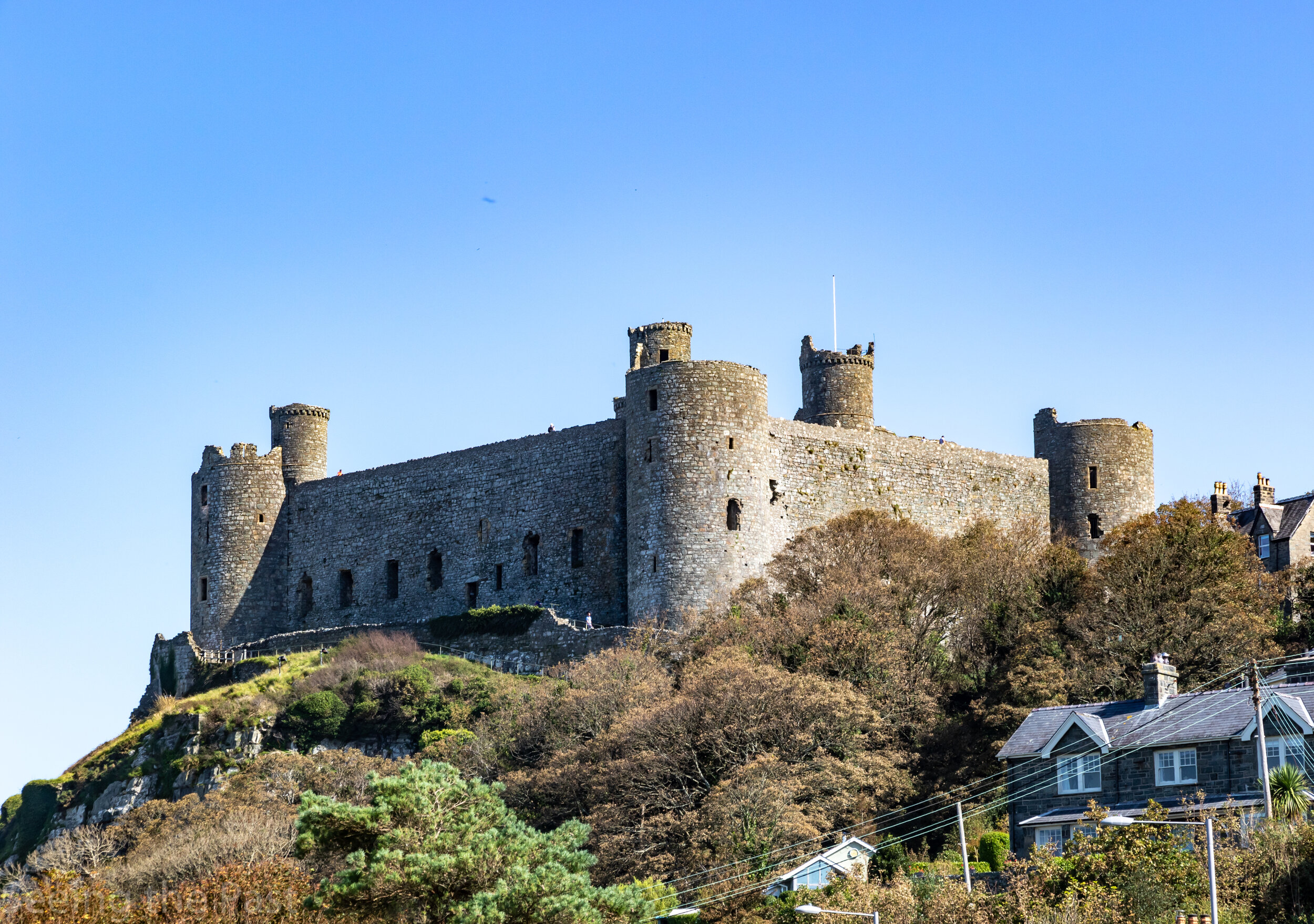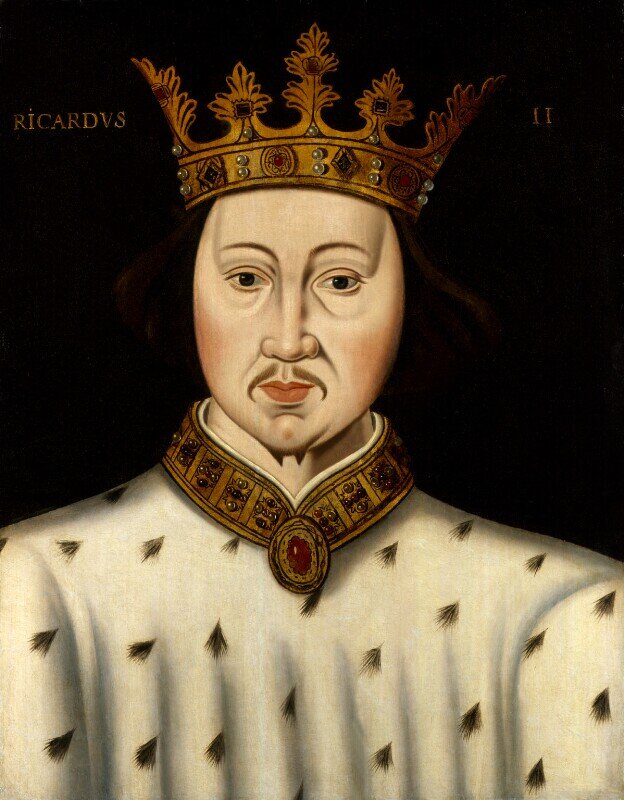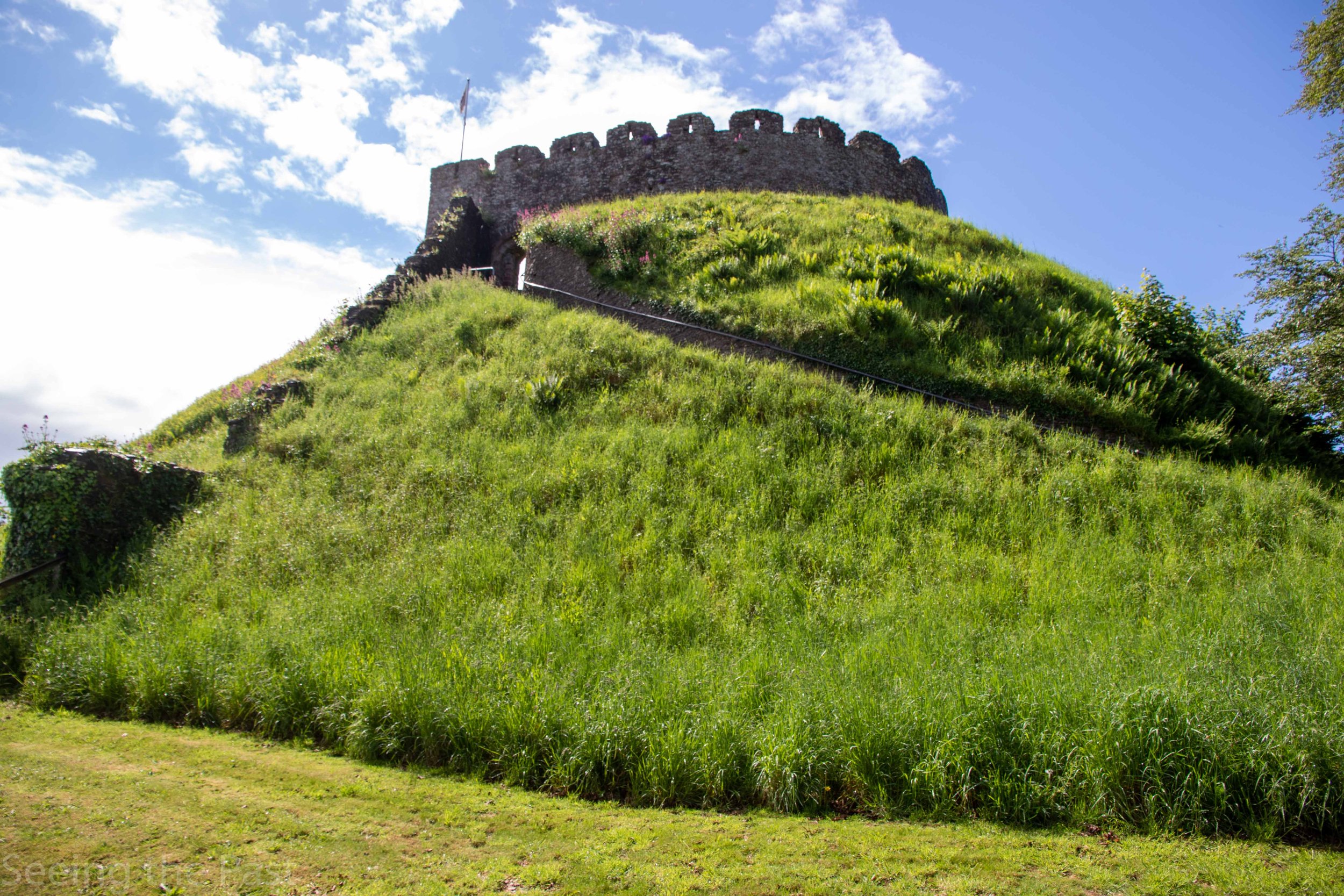Harlech castle; a fascinating castle with an awesome view
/Menu
Why visit Harlech Castle?
What is there to see at Harlech Castle?
What is the history of Harlech Castle?
Essential information
Why visit Harlech Castle?
Harlech is a beautiful castle and very different from castles nearby and elsewhere in Britain.
Approaching the entrance with four majestic round towers in front of you presents an awesome medieval scene.
You can walk nearly a whole circuit around the castle walls and get spectacular views of Snowdonia, the sea and the interior of the castle.
Harlech has an amazing twin towered gatehouse and is concentric in design.
Looking at Harlech Castle from the shore, it is at the top of a rocky promontory and towers over everything. It can be seen for miles.
It is one of Edward I’s “Iron Ring” of castles in his quest for the English to control Wales in perpetuity.
What is there to see at Harlech Castle?
The impressive entrance to the castle. You can see a small car park here but there is a bigger one, 5 minutes walk away.
To make the castle strong, one of the first things completed was a rock cut ditch. You can see the cut rocks on the left hand side of this photo.
The gatehouse. Twin tower gatehouses became regular castle features of castles in the 14th century.
The rock cut ditch.
Walking through the gatehouse. The passage at the back is 16 metres long. To get through the passage and get into the inner bailey, an attacker had to get through 3 sets of heavy wooden doors and 3 portcullises. Looking up, the attacker would see murder holes. These may have been used to drop horrible or heavy things on the attacker, shoot arrows through at the attacker or simply to poor water onto any fire that was created to destroy the doors. The semicircular arches that form the passageway are not a common feature in 14th century English and Welsh castles. Usually the arches are pointed
A portcullis slot
The Gatehouse from inside the castle.
Special windows in the Gatehouse.
The technical name for these windows is “segmental-headed” but why are they important? Edward I’s master mason responsible for Harlech castle, was called Master James of St George but little was known about him until 70 years ago when Arnold Taylor, the Chief Inspector of Welsh Monuments between 1946 and 1955, set himself the task of tracking down Master James. His eventual conclusion was that Master James had an earlier career, working for the Count of Savoy, a small area of alpine territory that spanned across parts of Switzerland, France and Italy. Castles in that area, such as Chillon Castle on the shores of Lake Geneva, showed similar features to Edward’s unusual castles of North Wales. The windows above in Harlech Castle, were unusual for England and Wales, but similar examples were found in Chillon Castle, Switzerland. Not only were the windows a similar shape, they were virtually the same size! When measured from top to bottom, there was only 5mm difference. He also pointed out that the semicircular archways in the gatehouse at Harlech were unusual for 14th century castles in England and Wales but were present in castles in Savoy. Taylor’s research showed that there were strong ties between the Counts of Savoy and the English royal family and that Edward I had cousins in Savoy. Added to this, Edward I had visited Savoy on his way back from a crusade and may well have seen some Savoy castles and even met the masons in charge of their construction, ie Master John and his son Master James of St George.
The kitchen area.
The Great Hall
Spiral staircase
The Inner Ward
The wallwalk and a watchtower. Magnificent views of the coast and Snowdonia can be gained from up here. Sadly, the crenellations no longer exist.
Here is a photo of the crenellations at Caernarfon to give you an idea of what the top of the walls should look like. Arrows can be fired through the gaps, “Crenels” or through the arrow loops in the upright masonry, the “Merlons”.
At the time that Harlech Castle was built, the sea would have been at the bottom of this photo.
When Edward planned his new “iron ring” of castles, one of his aims was that the castle must be able to be supplied from the sea unmolested, even when besieged by the Welsh. Castles at Conwy, Caernarfon, Beaumaris and Harlech were all on the coast. In earlier wars, inland castles had fallen to the Welsh through being successfully besieged and so this tactic was to be no longer so effective. Even Harlech, which today is quite a distance from the sea, had a sea gate.
Look how far the sea has receded!
If you look closely at the stonework below the green arrows, you can see that the pattern changes and this illustrates different building phases.
Spiralling Putlog holes
The funnel shaped bulge in this wall was believed to be a unique toilet by Arnold Taylor.
The funnel shaped toilet/garderobe from a lower angle.
At Harlech, a further highly unusual feature is this funnel shaped construction that is often overlooked by visitors. Arnold Taylor believed this was a garderobe or toilet and again found examples in Savoy.
What is the History of Harlech Castle?
There have been stories of a fortress or stronghold at Harlech but no physical evidence has been found: archaeological or documentary.
For the full story of Edward I and the creation of the “Iron Ring” group of castles see our blog “ Why did Edward I build castles in North Wales?
Harlech Castle came about after Edward I decided that he needed to control the whole of Wales once and for all after yet another costly war in 1282-3.
Each castle, including Harlech, was to be on the coast so that a besieging army would not succeed ever again. Siege warfare was a favoured and successful Welsh tactic and these new locations would put a stop to it.
Like the other castles that Edward built in North Wales, the rapid construction meant that hundreds of workers were recruited from all over England and building materials , likewise, came from afar. In 1287, 1000 men were working on the castle. The first thing to be constructed was the rock cut ditch followed by the inner walls including the lower parts of the round towers. Construction was masterminded once again by Master James of St George, formerly from Savoy.
The eventual plan was that Harlech Castle would be a base for 30 soldiers including 10 crossbowmen under the control of the “Constable” of the castle. The first constable was Sir John de Bonvillars or Bevillard, who came, like Master James, from Savoy.
A statue of Master James of St George seen at Beaumaris Castle.
1294 another Welsh uprising
Despite the death of Llwelyn and all of Edward’s plans, the Welsh rose once more. This time, some of the rebels were led by a distant cousin of Llwelyn called Madog ap Llwelyn, whilst others were locally led. Harlech, together with Edward’s castles at Conwy and Caernarfon, were all attacked, with the rebels being successful against the unfinished Caernarfon. The town walls were breached and the castle taken. Once inside, everything that could burn, was set on fire. Royal officials at the castle such as the sheriff and English merchants (burgesses) from the town were slaughtered. On the other hand, Harlech, despite its garrison being only 19, held out and was reinforced and resupplied from the sea, just as Edward I had planned.
At this time, Edward had been planning to invade France and so he used the army and equipment that he had got ready for the French campaign, to defeat the Welsh rebels. Thirty-five thousand troops bound for France were now turned around to take on the rebels, his biggest army ever to fight and defeat the Welsh.
King Edward I
1399 Richard II’s demise
In 1399 Henry Bolingbroke aka Henry IV, challenged the unpopular King Richard II which resulted in Richard fleeing to Wales. He secretly arrived by night but quickly moved on to his other castles in North Wales in his quest to get support. When he got to Conwy Castle, the Earl of Northumberland persuaded him to leave the fortification but then double-crossed him and handed him over to Bolingbroke. This was to be the end of Richard’s freedom and position as King.
King Richard II
1400 Owain Glyndwr’s rebellion.
In September 1400, Owain Glyndwr assumed the role of Prince of Wales and yet another Welsh revolt took place. Harlech was in the middle of this revolt with Prince Henry aka Henry V, relieving Harlech Castle in 1401, 1402, and 1403! In 1404, Owain’s forces were triumphant at Harlech.
The following year, Owain even summoned his own parliament to Harlech to debate what terms should be offered to the English!
This was the high point of Owain’s rebellion and, slowly, the territory over which he ruled began to shrink. In 1409, one of the leading lords in England, Gilbert Talbot, 5th Baron Talbot, besieged Harlech and starved the Welsh into submission. Owain was never captured despite large rewards and offers of a pardon and he acquired a heroic status whereby, one day he would return to defeat the English. Shakespeare also included him in his play, Henry IV part 1.
King Henry VI
1455-87 The Wars of the Roses
The “Wars of the Roses” was a long civil war between two families, the House of York (white rose emblem) and the House of Lancaster (red rose emblem) both claiming the throne of England. The series of battles lasted from 1455 to 1487 and was the longest period of civil war in England. In 1461, 50 000 men took part in the Battle of Towton in which 28 000 were slaughtered. This figure is worse than the horrific number who died on the first day Battle of the Somme in 1916, often cited as the worst ever casualty total in one day. The winners at Towton were the “Yorkists” but despite this, Harlech remained loyal to the now ex-king, the Lancastrian, Henry VI. Seven years later, it still remained a loyal Lancastrian outpost and so Lord Herbert of Raglan led a force from the south and bombarded Harlech Castle with cannon balls. Harlech soon surrendered faced which such force and 50 of the gallant defenders were now imprisoned in the Tower of London. Some people have surmised that these defenders are the men mentioned in the song, “Men of Harlech”.
IN 1485, Henry Tudor aka, Henry VII, defeated the Yorkist Richard III at the Battle of Bosworth. This time, the occupants of Harlech Castle were loyal to the defeated king, Richard III and held out for several months. Under the Tudors, Harlech had little money spent on it and the building began to decay.
King Henry VII
1642-51 The English Civil War
Following its tradition of loyalty to the crown, Harlech supported the King’s side, the Royalists, against the Parliamentarians in the English Civil war and so found itself being besieged in 1646. The siege lasted for almost a year before the castle surrendered.
Although the Parliamentarians had a habit of destroying castles so that they could not be used against them in the future, Harlech Castle had its defences “pruned” but it was not turned into a ruin as you can witness today.
Find out more;
Essential information
Getting there;
RoadA496 from Barmouth, A487/A496 from Porthmadog.
Rail200m/220yards, Shrewsbury-Machynlleth/Pwllheli route.
Bus150m/170yards, route No 38 + 39 (No 2 on Sunday), Barmouth-Harlech/Porthmadog.
www.visitharlech.wales/harlech-hoppa
BikeNCN Route No.8 On route.
Postcode LL44 2YH
For further information, please contact: Traveline Cymru on 0800 464 0000 or National Rail Enquiries on 03457 48 49 50.
Tickets
During the Covid crisis you cannot buy tickets at the castle entrance. Contact https://www.cadwmembership.service.gov.wales/events/ Tickets have to be purchased online in advance. We actually saw people turned away because they had not purchased tickets online. No tickets can be purchased at the castle.
Telephone 01766 780552
Follow us on social media
Articles that may interest you
















































As you wander around Kenilworth Castle it morphs from Medieval Fortifications to Tudor Palace and its story features John of Gaunt of medieval times to an Elizabethan love story involving Robert Dudley, aka the Earl of Leicester and Queen Elizabeth I. The castle was involved in the longest siege in English history and is an amazing place to explore. It features a huge square keep, the ruins of a medieval palace , Queen Elizabeth’s apartments and a reconstructed ornate garden created out of love for her.